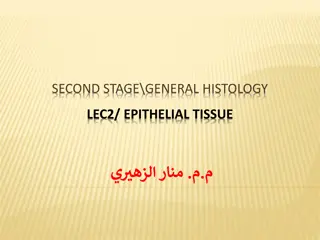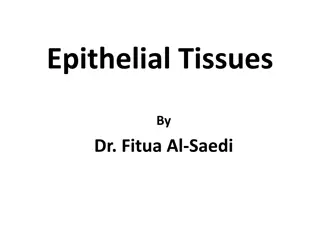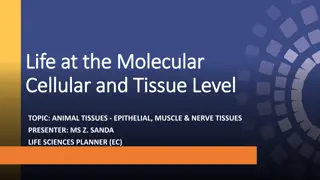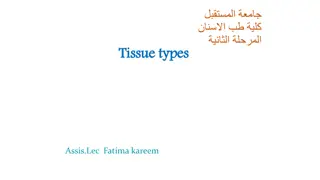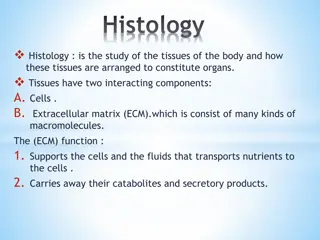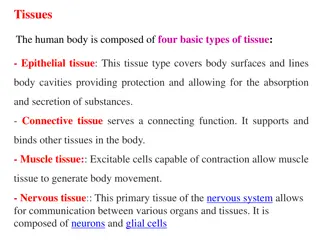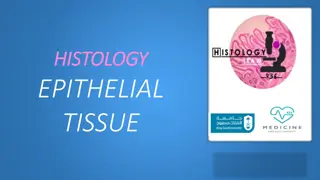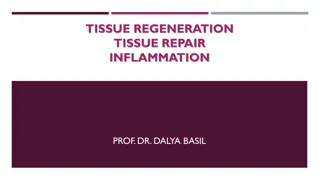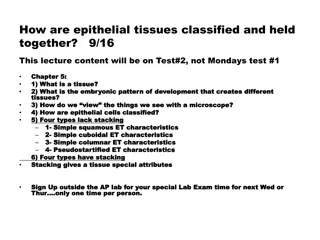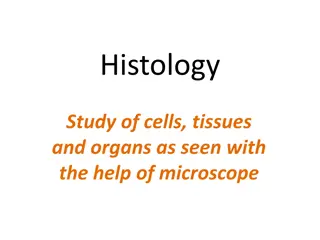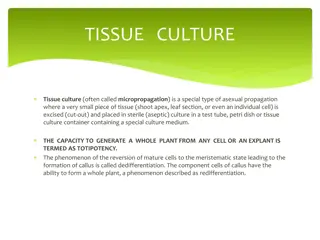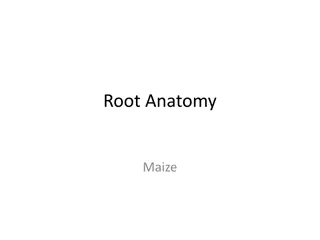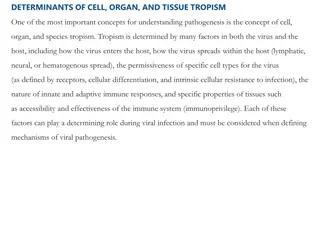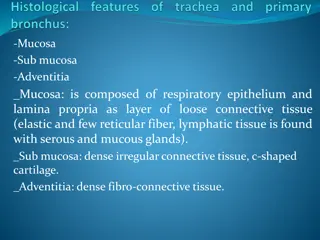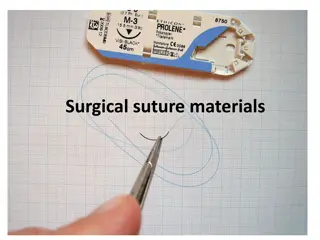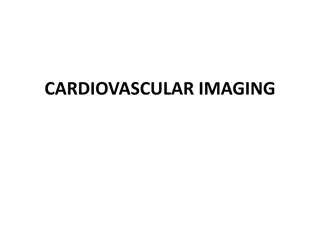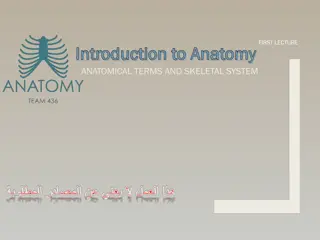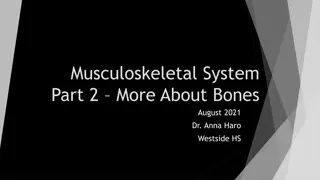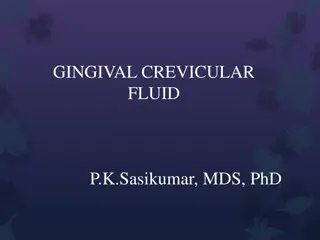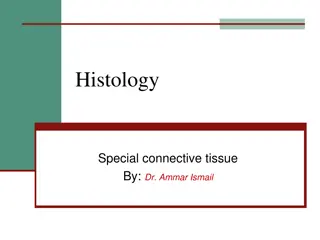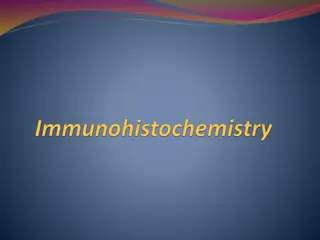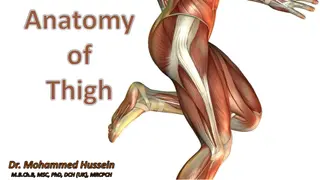Understanding Epithelial Tissue in Human Anatomy: A Comprehensive Overview
Epithelial tissue is a vital component of the human body, serving as a protective barrier and interface with the external environment. This tissue type, along with other essential tissues, plays a crucial role in the development and function of organs. Learn about the structure, function, and significance of epithelial tissue, as well as its basement membrane and basal lamina, in this informative guide.
Download Presentation

Please find below an Image/Link to download the presentation.
The content on the website is provided AS IS for your information and personal use only. It may not be sold, licensed, or shared on other websites without obtaining consent from the author. Download presentation by click this link. If you encounter any issues during the download, it is possible that the publisher has removed the file from their server.
E N D
Presentation Transcript
University of Basrah College of Medicine/ Department of Human Anatomy First Class Medical Biology
Epithelial Tissue Balqees kadhim
Objectives What is epithelium Mean characteristics of epithelium Function of epithelium
Tissues Are groups of cells that lie together to accomplish a common function. During the early developments of embryo, there are three primitive germ layers: ectoderm, mesoderm, and endoderm. From these germ layers the tissues formed and the body is developed
Histology (groups of cells that are similar in structure and function) 4 Tissue Types
Epithelial tissue Is one of the four major tissue types in the body acting as an interface between the body and the rest of the world. Usually separated from the underlying connective tissue by a thin sheet of basement membrane.
Epithelial tissue Has a special function It must cover all the surfaces of the body
Basal laminae and basement membrane All epithelium rests on a sheet like extracellular structure called basal lamina that is not visible under the light microscope. Basal lamina composed of ; type IV collagen, laminin, entactin and proteoglycan.
The epithelial cells produce the basal lamina . The term basement membrane usually contains two fused basal laminae or a laminae and reticular lamina . The basal lamina forms a sieve like barrier between epithelial and connective tissue.
Functions of the basal lamina -Structural support provides strong connection between epithelium and underlying connective tissue. -Filtering forms a semi-permeable barrier to regulate the exchange of macromolecules between epithelium and underlying connective tissue
-Angiogenesis Formation of new blood vessels
Diagrammatic illustration showing epithelial cells resting on basement membrane.
Main Characteristics of Epithelium -An epithelium is a continuous sheet of connected cells. -An epithelium contains very little extracellular matrix. -An epithelium sits on a basal lamina. -Epithelium does not contain blood vessels -Derived from all embryonic germ layers.
Function of epithelium Protection -Epithelial cells from the skin protect underlying tissue from different conditions Sensation Sensory stimuli penetrate specialized epithelial cells.
Secretion In glands, epithelial tissue is specialized to secrete specific chemical substances. Absorption Certain epithelial cells lining the small intestine absorb nutrients from the digestion of food.
Excretion Ex; Kidney and sweat gland Diffusion Simple epithelium promotes the diffusion of gases, liquids and nutrients. Cleaning Ciliated epithelium assists in removing dust particles and foreign bodies which have entered the air passages.
Reduces Friction Epithelial cells that line the entire circulatory system reduce friction between the blood and the walls of the blood vessels.
Renewal of cell epithelia The cells of epithelial tissue are capable of rapid division, which is the process that creates new cells. The skin, constantly produces new cells to replace the dead cells closest to the skin's outer surface. Also the cells of tissues lining the digestive tract are undergo continuous division.
Conclusion Epithelial tissue is that it covers the surfaces of the body, whether external or internal. It acts as a protective covering or boundary for such surfaces including the outer layer of the skin, as well as the inner surface of "hollow" organs like the stomach, colon, and blood vessels.
Cells are placed very close to each other Intercellular space is absent or very little and so the intercellular matrix. All epithelial tissues are supported by connective tissue.


